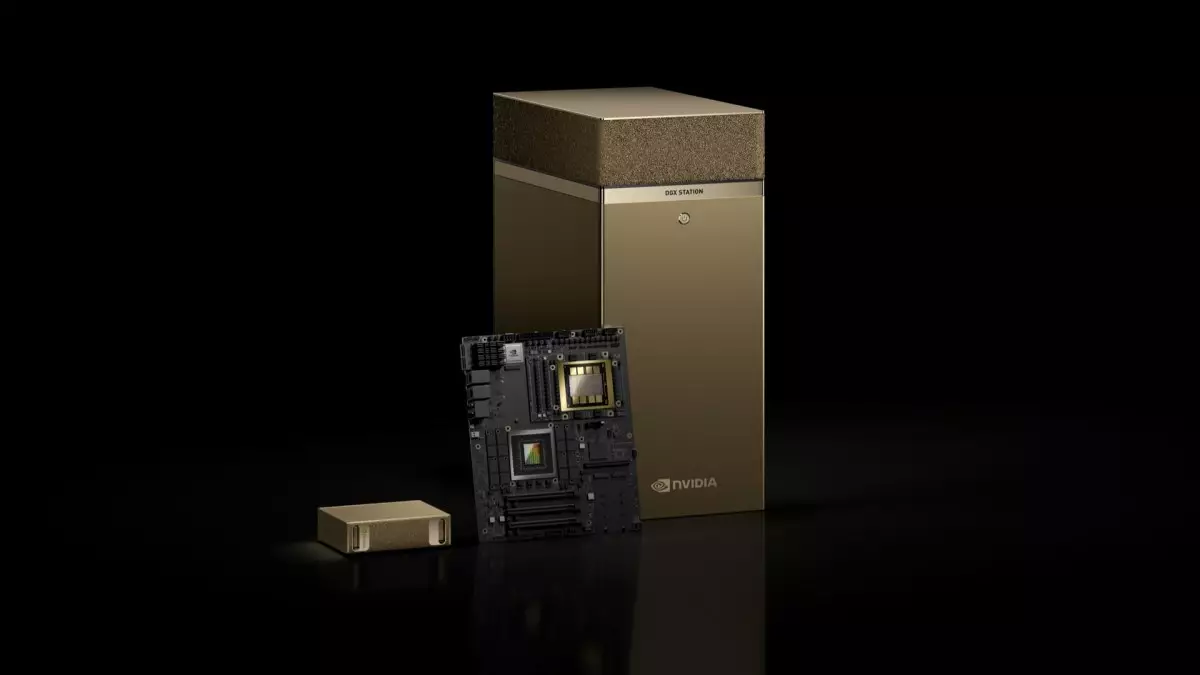Nvidia has taken a significant step forward in the realm of computing technology, as revealed during its recent GTC 2025 conference. The company, renowned for its graphics processing units, has announced the debut of its “AI personal supercomputers,” fueled by the cutting-edge Grace Blackwell chip platform. With this launch, Nvidia is aiming to redefine how AI models are developed, tested, and deployed, particularly in edge computing environments. This announcement is not merely an extension of existing technology; it represents a watershed moment where personal computing intersects innovatively with artificial intelligence.
The Game-Changing Innovations Unveiled
During a captivating keynote, Nvidia’s visionary founder and CEO, Jensen Huang, introduced two groundbreaking machines: DGX Spark and DGX Station. The DGX Spark, previously known as Project Digits, boasts a staggering capacity of up to 1,000 trillion operations per second thanks to its GB10 Grace Blackwell Superchip. This extraordinary processing capability positions the DGX Spark as a formidable solution for organizations needing rapid prototyping and fine-tuning of complex AI models. On the other hand, the DGX Station is powered by the GB300 Grace Blackwell Ultra Desktop Superchip, coupled with an impressive 784GB of memory. This machine is designed to accommodate more substantial workloads, catering to enterprises that require significant computational resources.
Huang’s proclamation that “this is the computer of the age of AI” underscores the expectation that these new systems will not just support but empower the next generation of AI development. This is not simply about speed; it’s about changing the entire landscape of computing in response to the rapidly evolving needs of contemporary enterprises.
Accessibility and Versatility for All
Another notable aspect of Nvidia’s latest offerings is their versatility and accessibility. With the DGX Spark readily available and the DGX Station set to be released this year through various reputable manufacturers, Nvidia positions itself to meet a broad array of consumer needs. From smaller edges contributing to massive networks to powerhouse workstations, the lineup caters to various user scenarios, emphasizing Nvidia’s commitment to democratizing AI capabilities.
As Huang remarked, “AI agents will be everywhere.” This statement resonates with the transformative potential of these machines in revolutionizing workflows across industries. Whether it’s healthcare, finance, or manufacturing, the ability to harness advanced AI computing power at the edge will enable businesses to innovate without the constraints that previously limited growth.
A Vision for Future Computing
Nvidia’s ambitious vision reflects not solely a commitment to advanced technology but an understanding of the future landscape of work and artificial intelligence. As AI becomes increasingly integrated into daily operations and decision-making processes, the infrastructure supporting these technologies must evolve. The introduction of personal supercomputers designed for AI applications is a strategic move, ensuring that businesses across the globe can adapt and thrive in a rapidly changing environment.
Nvidia’s GTC 2025 announcements represent more than machines; they symbolize a cultural shift toward embracing AI as a core component of our computing infrastructure. This leap not only showcases Nvidia’s prowess in technology but also emphasizes its role as a catalyst for the future of AI-driven innovation. The message is clear: as we stand at the brink of an AI revolution, Nvidia is poised to lead the charge.

